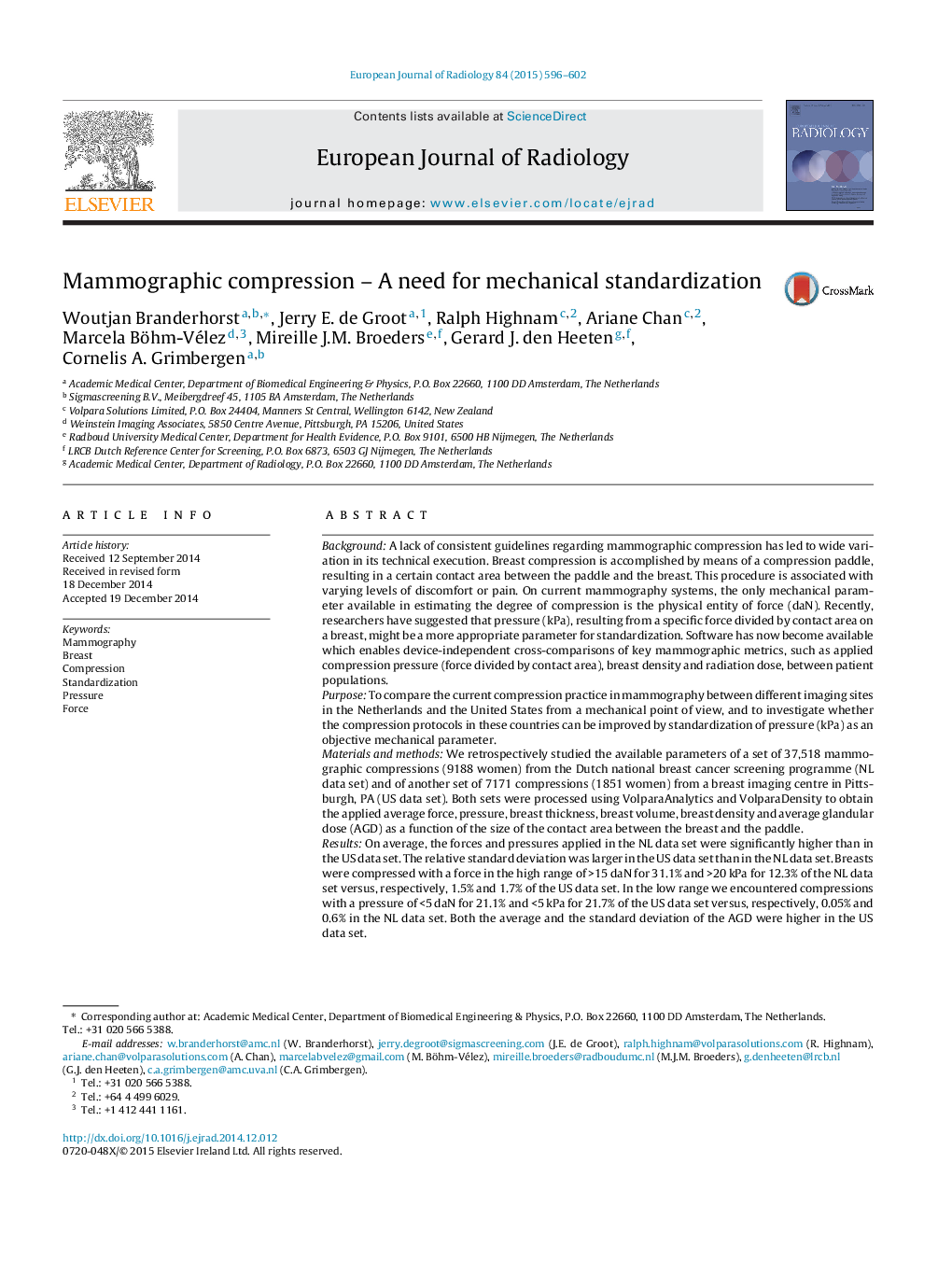| کد مقاله | کد نشریه | سال انتشار | مقاله انگلیسی | نسخه تمام متن |
|---|---|---|---|---|
| 4225135 | 1609755 | 2015 | 7 صفحه PDF | دانلود رایگان |
• We studied mechanical breast compression practice in two different clinical sites.
• We visualized the distributions of not only the applied force but also the pressure.
• The applied pressure was highly variable, both within and between the data sets.
• The average applied pressure and the variation were higher for smaller breasts.
• A proposal for improved individualization, by standardizing pressure, is discussed.
BackgroundA lack of consistent guidelines regarding mammographic compression has led to wide variation in its technical execution. Breast compression is accomplished by means of a compression paddle, resulting in a certain contact area between the paddle and the breast. This procedure is associated with varying levels of discomfort or pain. On current mammography systems, the only mechanical parameter available in estimating the degree of compression is the physical entity of force (daN). Recently, researchers have suggested that pressure (kPa), resulting from a specific force divided by contact area on a breast, might be a more appropriate parameter for standardization. Software has now become available which enables device-independent cross-comparisons of key mammographic metrics, such as applied compression pressure (force divided by contact area), breast density and radiation dose, between patient populations.PurposeTo compare the current compression practice in mammography between different imaging sites in the Netherlands and the United States from a mechanical point of view, and to investigate whether the compression protocols in these countries can be improved by standardization of pressure (kPa) as an objective mechanical parameter.Materials and methodsWe retrospectively studied the available parameters of a set of 37,518 mammographic compressions (9188 women) from the Dutch national breast cancer screening programme (NL data set) and of another set of 7171 compressions (1851 women) from a breast imaging centre in Pittsburgh, PA (US data set). Both sets were processed using VolparaAnalytics and VolparaDensity to obtain the applied average force, pressure, breast thickness, breast volume, breast density and average glandular dose (AGD) as a function of the size of the contact area between the breast and the paddle.ResultsOn average, the forces and pressures applied in the NL data set were significantly higher than in the US data set. The relative standard deviation was larger in the US data set than in the NL data set. Breasts were compressed with a force in the high range of >15 daN for 31.1% and >20 kPa for 12.3% of the NL data set versus, respectively, 1.5% and 1.7% of the US data set. In the low range we encountered compressions with a pressure of <5 daN for 21.1% and <5 kPa for 21.7% of the US data set versus, respectively, 0.05% and 0.6% in the NL data set. Both the average and the standard deviation of the AGD were higher in the US data set.Conclusion(1) Current mammographic breast compression policies lead to a wide range of applied forces and pressures, with large variations both within and between clinical sites. (2) Pressure standardization could decrease variation, improve reproducibility, and reduce the risk of unnecessary pain, unnecessary high radiation doses and inadequate image quality.
Journal: European Journal of Radiology - Volume 84, Issue 4, April 2015, Pages 596–602
